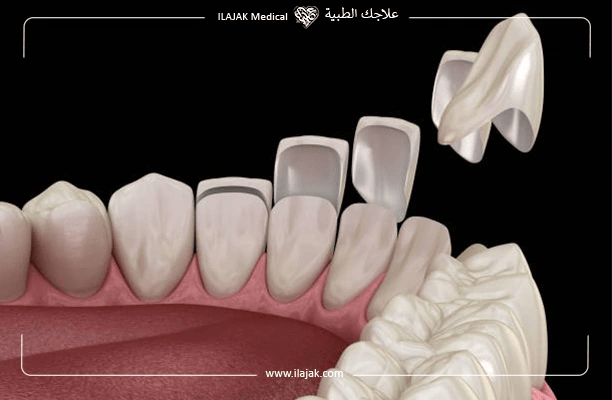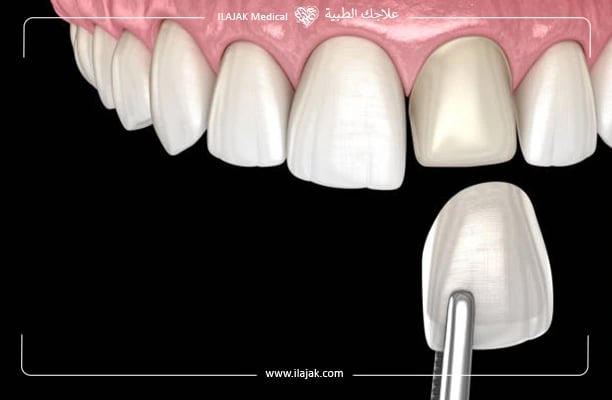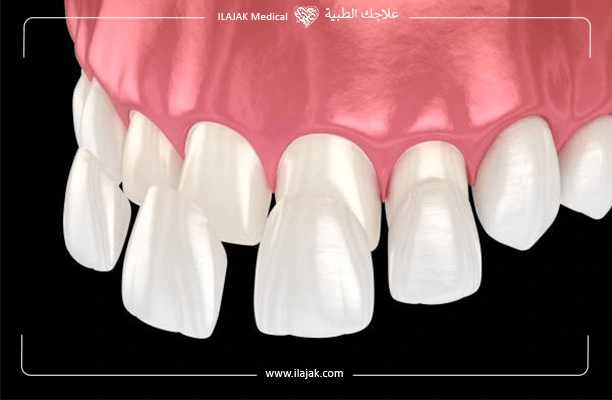Composite Bonding: All You Need to Know

Composite bonding has transformed dentistry by providing a minimally intrusive way to improve your smile.
Whether you're dealing with cracked, chipped, or discolored teeth, composite bonding can restore your confidence and give you a natural-looking smile. In this detailed article, we'll go over the world of compite bonding including its methods, benefits, potential hazards, financial considerations, and comparisons to veneers. In addition, we will go through ILAJAK's specific package choices.
What is Composite Bonding?
A minimally invasive dental surgery called composite bonding, commonly referred to as dental bonding, is used to enhance the aesthetic and function of teeth.
In order to correct numerous dental imperfections, a tooth-colored composite resin material is used.
For repairing issues like minor chips, fractures, gaps, and discolorations, this procedure is quite helpful.
The composite resin is carefully sculpted and shaped by a skilled dentist to match the color and shape of your natural teeth, resulting in a seamless and aesthetically pleasing restoration.
Without having to remove a lot of enamel, this surgery is a fantastic way to correct small dental flaws.

Procedures for Composite Bonding
In order to get a faultless outcome and a beautiful smile, composite bonding entails a number of clearly defined stages. The procedure can be broken down into three key phases:
Before Teeth Bonding
Before the bonding process begins, your dentist will conduct a thorough examination of your teeth to determine the suitability of composite bonding. In order to plan the appropriate course of action, the damage or discoloration must first be assessed.
In this initial appointment, the dentist will go through your objectives and expectations to make sure composite bonding is the best course of action in your particular situation, They’ll also Take dental X-rays, check your teeth, and inspect your gums to see whether you are a candidate for the operation. If you have severe tooth decay, gum disease or other serious oral health problems, you’ll probably need to treat those issues first.
During Dental Bonding
There are various processes involved in the dental bonding:
Select a shade. Your dentist uses a shade guide to select a composite resin material that matches the color of your natural teeth.
Prepare your tooth. Your tooth's surface is roughened, and a liquid for conditioning is then administered. These actions aid in the bonding material's adhesion to your tooth.
Apply the composite resin material. The putty-like resin substance is applied, shaped, and smoothed into the desired shape.
Cure the material. Next, the composite resin is hardened with a special curing light, which "bonds" the material to the surface of your tooth.
Sculpting and Shaping: The composite resin is expertly sculpted and shaped by the dentist to resemble the anatomy of the tooth.
Polish your tooth: Finally, your dentist will make any last-minute modifications that are required and polish your tooth to a gloss that looks natural.
Each tooth takes between 30 and 60 minutes to finish the operation.
After Teeth Bonding
Dental bonding is more susceptible to discoloration and chipping than veneers and crowns, so it's important to keep that in mind. But caring for your bonded tooth or teeth is straightforward and doesn’t require any special care.
Make the following preparations to ensure your bonded tooth lasts as long as possible:
Brush: Spend two minutes brushing every day, morning and evening.
Floss: Carefully floss between the teeth next to the bonded tooth and along the gum line. You may also use interdental brushes if you have trouble flossing.
Top up on water: Many individuals don't realize how important water is for keeping the tongue healthy. Drinking water after each meal can ensure that there are no food crumbs or germs in your mouth that might damage your bonded tooth, and indeed all your other teeth.
Watch out for staining: The composite resin used for tooth bonding will discolor, so keep that in mind. Red wine, sweet, and dark-colored foods, and beverages should all be avoided. Avoid practices that induce wear; for example, chewing ice, pencils, or fingernails will most likely cause your bonded tooth to break down.
By adhering to just food and drink and avoiding objects, you can protect the resin from this risk.
Read also: What Is Teeth Bonding And What To Expect?

Is dental bonding painful?
Dental bonding is often not painful because your dentist won't be operating too closely to the pain-sensing nerve within your tooth. Dental bonding typically doesn't even require an anesthetic. Following their dental bonding surgery, some persons could suffer brief sensitivity. Painkillers sold over the counter may help with this discomfort.
What are the Benefits of Composite Bonding?
Composite bonding is a popular option for people seeking aesthetic dental improvements since it has numerous advantages:
Natural Appearance: The composite resin may be colored to blend in with your natural teeth, giving you a smile that looks seamless and natural.
Minimal Invasiveness: Composite bonding, in contrast to several other dental treatments, involves little or no enamel removal, protecting the natural structure of the tooth.
Versatility: Bonding has the ability to fix a wide range of aesthetic problems, including chips, cracks, gaps, and discoloration.
Fast and painless: The operation takes only a little time and is frequently finished in just one visit.
Cost-effectiveness: treatments requiring more intrusive treatments, such veneers or crowns, are often more expensive than composite bonding.
Results immediately away: After the procedure, you'll notice the change right away, and in just one visit, your smile will be improved.

What are the Risks of Composite Bonding?
While composite bonding is typically a safe and successful operation, the following dangers should be avoided:
Staining: Composite resin can get discolored over time, particularly if exposed to staining substances such as coffee, tea, or cigarettes.
Chipping: While composite bonding is durable, it can chip or break if subjected to excessive force or biting on hard objects.
Durability: While durable, composite bonding may not be as long-lasting as other restorative options, such as veneers or crown, may require periodic touch-ups or replacements.
Repairs: Bonded teeth can be repaired if damaged, but repairs may not always be as seamless as the initial bonding process.
Composite Bonding vs Veneers
Porcelain veneers are ceramic coverings that are made for fitting over the fronts of your teeth. Your dentist often has to remove some enamel from your natural teeth in order to put them. Once placed, porcelain veneers are not reversible. They’ll need replacing every 10 to 20 years, Veneers may need numerous sessions.
On the other side, dental bonding could not need a large amount of enamel removal. As a result, bonding is completely reversible. Every three to ten years, you'll probably require touch-ups, which are typically completed in a single appointment.
Periodically, dentists will use the phrase "composite veneers." This is when your dentist uses composite resin to completely cover the top of your tooth.

How Much Does Composite Bonding Cost?
In accordance with the dentist's location, the complexity of the case, and the quantity of teeth being treated, the cost of composite bonding may change.
Costs for dental work range from $100 to $400 on average.
If you want an exact cost estimate based on your unique needs, you must consult with your dentist.
Booking Your Consultation
Are you prepared to use composite bonding to improve your smile? Scheduling a consultation with a skilled dentist is the first step to achieving the smile of your dreams. Your dentist will evaluate your oral health, talk to you about your cosmetic objectives, and develop a specialized treatment plan for you during the consultation.
For cost-effective and quality composite bonding procedures, consider scheduling a consultation at ilajak clinic. Their experienced dental professionals can provide personalized recommendations and guide you through the process.
Composite Bonding faqs
Composite bonding can last anywhere from 5 to 10 years or more with proper care. Routine dental visits and good oral hygiene practices can extend the lifespan of the bonded teeth.
Yes, composite bonding is a practical and efficient way to improve the look of your teeth, especially if you have minor cosmetic issues that need to be fixed.
Composite bonding is typically more cheap than alternatives like veneers, making it a sensible option for many patients looking to improve their appearance on a budget.
No, composite bonding does not damage teeth. The original teeth are just slightly altered through this minimally invasive technique.
No teeth are harmed by it.
In fact, it can protect your teeth by preserving their structural integrity and stopping additional harm.
We advise setting up a consultation with our skilled dental team at Ilajak Clinic for more individualized information and to assess whether composite bonding is the best option for you.
Teeth bonding requires zero downtime. You can start doing all of your usual activities as soon as you leave the dentist's office.
No. Simply follow good oral hygiene practices. At least twice daily tooth brushing, flossing, and routine dental checkups and cleanings are recommended.
Avoiding behaviors like biting your fingernails, chewing on pens, or opening things with your teeth is vital since bonding materials can chip. Call your dentist if you discover any sharp edges on a bonded tooth or if your tooth feels strange when you bite down.
In conclusion, you can have A very nice smile by
composite bonding, it's effective dental procedure that can address your self-confidence by addressing various cosmetic concerns. It has grown to be a popular option for those looking to enhance the looks of their teeth because to its natural appearance, minimum invasiveness, and cost. If you're considering composite bonding, our experienced dental professionals at Ilajak Clinic are here to guide you through the process and help you achieve the smile you've always desired. Contact us today to schedule your consultation.




Treatment Services
In the Best Medical Centers
Contact Us
Please fill the form below and describe your condition, We will contact you back
- Dental Treatment
- Hair Transplant
- Obesity Surgery
- Vision Correction
- Health Resorts
- Other Medical Services
- No elements found. Consider changing the search query.
- List is empty.
Your personal data is processed as indicated in the general statement text and by continuing, you explicitly consent to the processing

